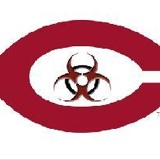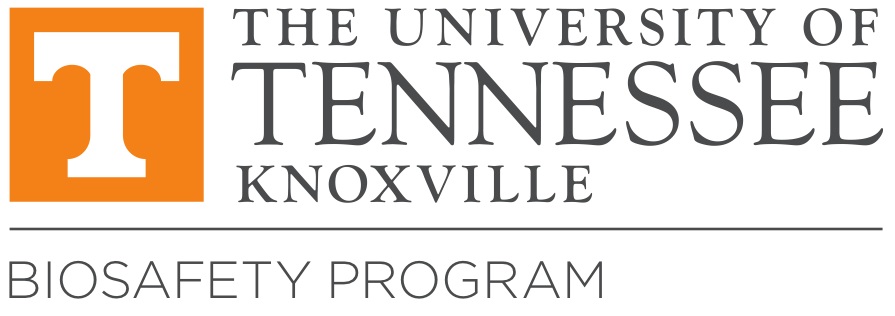Information
-
Principal Investigator(s)
-
IBC #
-
Protocol approved
-
Approval date
-
Review date
-
Department/Division
-
Building and room numbers
-
Lab Representative
-
Phone number
-
Infectious agent(s)
-
Biosafety level
-
Conducted on
-
Prepared by
-
Biosafety officer(s)
- John Bivona, R.B.P.
- R. Allen Helm, Ph.D., R.B.P.
- Lauriane Quenee, Ph.D.
- Hsiang-Ming (Anthony) Wang, Ph.D., MBA, SM(NRCM)
-
Biosafety officer signature
A. Standard Microbiology Practices
-
Access to lab area restricted (I.e., controlled by lab supervisor)?
-
Good hand washing practice including soap availability
-
Evidence of food or drink in laboratory area
-
Sign of mouth pipetting
-
Device/practice to minimize aerosol generation
-
Lab is maintained in a clean/sanitary condition. Work surface is decontaminated daily with no evidence of unattended spills and/ or other housekeeping concerns?
-
Containers are properly labelled
B. Special Practices
-
Door have locks and is closed when BSL2 work is in progress
-
Health surveillance program in place
-
- Immunization
- Baseline serum
- High risk personnel
-
Comments
-
Biohazard signage present at lab entrance
-
Biohazard stickers are attached to equipment
-
BSL-2 policies and procedures established
-
Lab members know how to access the policies including IBC protocols and Biosafety manual
-
Microbiological safety audit completed/updated
-
Use of containers that prevent leakage of material
-
Emergency response procedures/ spill protocol posted
-
Approved disinfectant are used, labelled, and dated
C. General housekeeping
-
Evidence of pest management issues?
-
Insect/rodent control in place?
-
Animals and plants not associated with work present in work areas?
-
Lab equipment decontaminated routinely ( no evidence of unattended splashes and spills)
D. Sharps and biological waste disposal practices
-
Sharps used in the lab
-
Types of sharps used
- Needles
- Devices
- Glassware
-
Sign of recapping needle
-
Needles and other sharps are disposed of in appropriate sharps container?
-
Waste decontamination prior to disposal
-
Autoclaving
-
On-site disposal (boxes from EH&S)
-
Biological waste containers were properly packed and labelled?
E. PPE
-
Gloves readily available?
-
Types of gloves available
- Latex
- Nitrile
- Other
-
Comments
-
Lab coats readily available?
-
Eye protection readily available?
F. Facilities & primary containment
-
Sink in each lab
-
Bench tops impervious to water and resistant to chemicals and heat?
-
Non-carpeted floors and lab furniture is made of non-porous materials
-
Windows fitted with fly screens
-
Eyewash stations
Station
-
Location
-
Free of obstructions and easily accessible?
-
Functional?
-
Documentation showing station has been flushed/tested weekly
-
Date of last test/flush
-
BSCs
Cabinet
-
Type of cabinet
- Clean Bench
- Class I
- Class IIa
- Class IIb1
- Class IIb2
- Class III
-
Unless otherwise noted as "not intended for use with BSL-2 materials", BSC has been certified within the last year?
-
Date of last Certification
-
BSC is located away from doors, high traffic areas, and other airflow disruptions have been minimized?
-
Vacuum lines are properly filtered / liquid waste decontamination traps are properly housed in spill proof container?<br>
-
Location
-
Make & model#
-
S/N
Centrifuge
-
Used with biohazard?
-
Aerosol proof lids available
G. Biosafety Resources and Documentation
-
Have any new personnel been added who require BSL-2 or BBP training?
-
Name and UC cNetID
-
Biosafety manual is readily available
-
Location?
-
Does laboratory use a shipping designee?
-
Responsible personnel?
-
Are laboratory personnel working with human derived tissues, bodily fluids or cell lines that would require BBP training?
Blood Borne Pathogens
-
Exposure control plan is accessible?
-
Are there any new personnel that require BBP training?
-
Name and UC cNetID
-
Are there new personnel that have not been informed of their right to vaccination for Hepatitis B ?
-
Name and UC cNetID
H. Questionnaire
-
Was a lab representative available?
Interviews
BSL-2 practices
-
All procedures that may generate aerosols are conducted in BSC
-
Procedures are designed to minimize the generation of aerosols and/or splashes?
-
Personnel were familiar with the proper decontamination strategies for biological waste (e.g., cultures, stocks) prior to disposal?
-
Workers practice good hygiene/ hand washing procedures?
-
Personnel are aware of how to properly store and transport samples (I.e., capped leak-proof primary container, with leakproof secondary)?
Emergency procedures
-
Personnel are familiar with post exposure evaluation and follow-up
-
Personnel familiar with spills procedure?
Toxins
-
Select the toxins used
- Abrin**
- Aerolysin
- Botulinum neurotoxin**
- b-bungarotoxin
- Clostridium difficile enterotoxin
- Clostridium perfringens toxin
- Conotoxin**
- Diacetoxyscirpenol**
- Diphtheria toxin
- Listeriolysin
- Modeccin
- Pertussis toxin
- Pneumolysin
- Pseudomonas aeruginosa toxin A
- Ricin**
- Saxitoxin**
- Shiga toxin
- Shigella dysenteriae neurotoxin
- Staphylococcus enterotoxins**
- Steeptolysin O/S
- T-2 toxin**
- Taipoxin
- Tetanus toxin
- Teytodotoxin**
- Volkensin
- Yersinia pest is murine toxin
-
Quantity
-
IBC protocol available
-
IBC #
Summary information
-
Comments
-
Mandatory Corrections
-
Deficiencies must be corrected by
-
Signature of laboratory representative
-
This Biosafety Level 2 (BSL-2) Inspection is in accordance with requirements outlined in the CDC/NIH Biosafety in Microbiological and Biomedical Laboratories 5th ed document (BMBL), NIH guidelines, and/or other applicable regulatory standards per Institutional Biosafety Committee and Office of Biosafety policy.
Additional Information on the BMBL, BSL-2 requirements, applicable regulatory standards, and institutional Biosafety Manual can be found on https://biologicalsafety.uchicago.edu/. Please contact the Office of Biological Safety if you have any questions or concerns regarding this evaluation. Thank you in advance for your cooperation in ensuring biological safety and research compliance.










